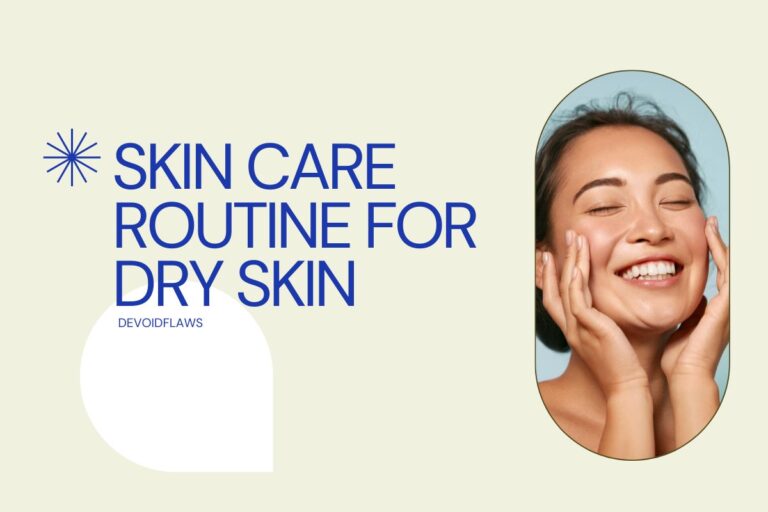Skin Care Routine For Beginners
Taking the first step towards a skincare routine can be both exciting and overwhelming. With countless products and advice flooding the market, it’s easy to feel lost.
But fear not, because this guide is here to simplify the process and help you establish a solid foundation for healthy, glowing skin.
Whether you’re a skincare novice or simply looking to refine your existing routine, we’ll break down the essentials, offer product recommendations, and share tips for achieving your best complexion.
Remember, skincare is a personal journey, and what works for one person may not work for another.
The key is to understand your skin type and concerns, then tailor your routine accordingly.
So, let’s dive in and discover the joy of nurturing your skin!
Why a Good Skincare Routine is Important?
A meticulously crafted skincare regimen is not merely a superficial pursuit of aesthetic enhancement but a multifaceted practice with profound implications for health, psychological well-being, and overall physiological function.
A comprehensive analysis of the significance of such a regimen necessitates an exploration of its diverse benefits, ranging from the molecular to the societal level.
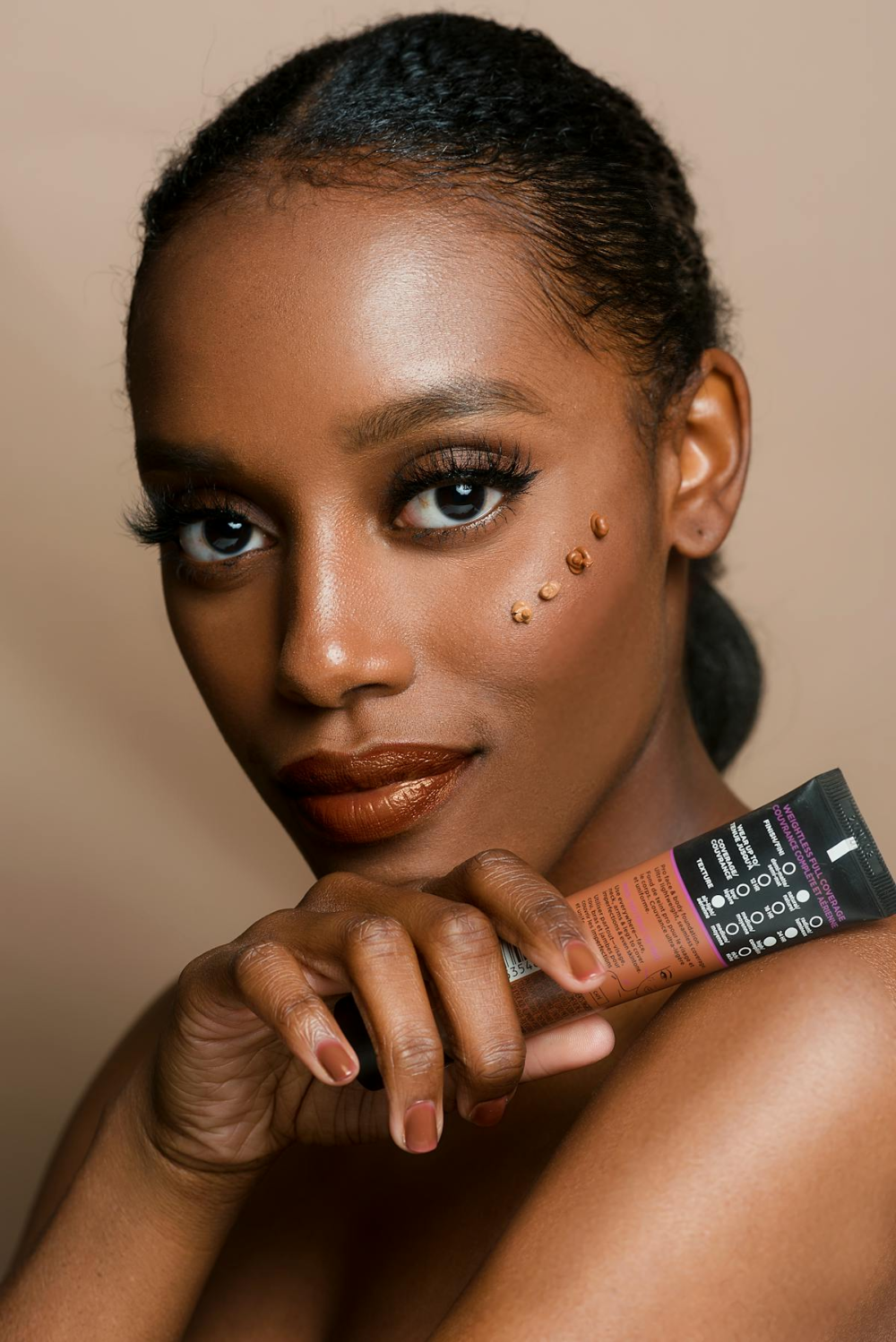
Cutaneous Preservation and Enhancement
The skin, as the body’s largest organ, is constantly subjected to a barrage of environmental stressors, including ultraviolet radiation, pollutants, and oxidative agents.
These stressors can induce cellular damage, accelerate aging processes, and predispose to various dermatological pathologies.
A well-formulated skincare regimen acts as a protective barrier, mitigating the deleterious effects of these external insults.
Topical antioxidants, such as vitamin C and E, neutralize free radicals, while sunscreens shield against UV-induced DNA damage. Furthermore, moisturizers maintain the skin’s hydration and integrity, preventing transepidermal water loss and promoting optimal barrier function.
The use of retinoids, derivatives of vitamin A, has been extensively documented to stimulate collagen synthesis, reduce the appearance of wrinkles, and improve skin texture.
Additionally, exfoliating agents, both physical and chemical, aid in the removal of dead skin cells, revealing a smoother, more radiant complexion.
Psychological Ramifications
Beyond its physiological benefits, a dedicated skincare routine can exert a profound impact on psychological well-being.
The act of self-care, inherent in the ritualistic application of skincare products, can foster a sense of mindfulness and self-compassion. This, in turn, can reduce stress, anxiety, and depression, contributing to an overall improvement in mental health.
Furthermore, the attainment of clear, healthy skin can significantly bolster self-esteem and confidence.
These psychological benefits can have far-reaching implications, influencing interpersonal relationships, professional success, and overall quality of life.
Systemic Health Implications
The skin is not an isolated entity but an integral component of the body’s complex physiological network.
Its health is inextricably linked to systemic well-being.
For instance, chronic skin conditions, such as psoriasis and eczema, have been associated with an increased risk of cardiovascular disease, diabetes, and other systemic disorders.
Effective management of these conditions through a comprehensive skincare regimen can mitigate these risks and promote overall health.
Moreover, the skin plays a crucial role in thermoregulation, immune function, and vitamin D synthesis.
A compromised skin barrier can disrupt these processes, leading to systemic dysregulation. Thus, maintaining optimal skin health is essential for overall physiological homeostasis.
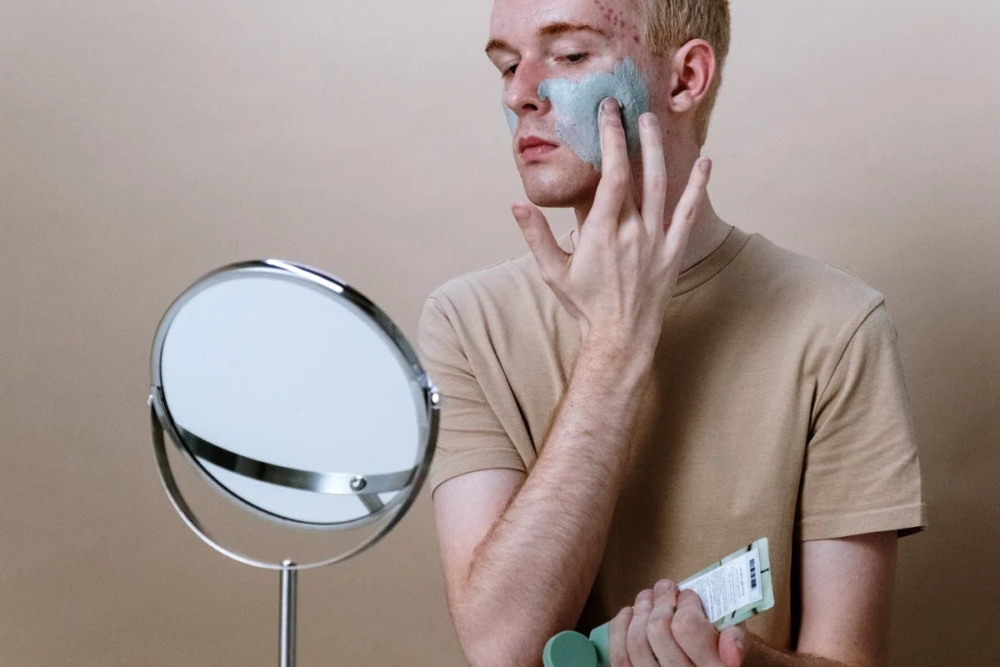
Sociocultural Considerations
The pursuit of flawless skin is deeply ingrained in many cultures, with societal norms and expectations often dictating beauty standards.
However, it is imperative to recognize that a skincare regimen is not merely a conformity to societal pressures but a personal choice rooted in self-care and health consciousness.
The cosmetics industry, recognizing the growing demand for skincare products, has responded with an overwhelming array of options.
This can be both a boon and a bane, as consumers are faced with the challenge of discerning evidence-based practices from marketing hyperbole.
Therefore, a discerning approach, guided by scientific literature and expert advice, is crucial in formulating an effective and safe skincare regimen.
Why a Beginner’s Skin Care Routine Doesn’t Have to be Complicated or Expensive?
A “beginner’s skincare routine” can feel daunting and financially overwhelming. However, it is crucial to recognize that effective skincare does not necessitate complexity or exorbitant spending.
A well-informed beginner can achieve healthy and radiant skin with a streamlined routine and budget-friendly options.
The Power of Simplicity
The skin, as the body’s largest organ, possesses an inherent capacity for self-regulation and repair.
A basic skincare routine that focuses on fundamental steps can support these natural processes without overwhelming the skin with excessive products and ingredients.
Cleansing, moisturizing, and sun protection are the three pillars of any effective skincare routine, providing a solid foundation for maintaining skin health.
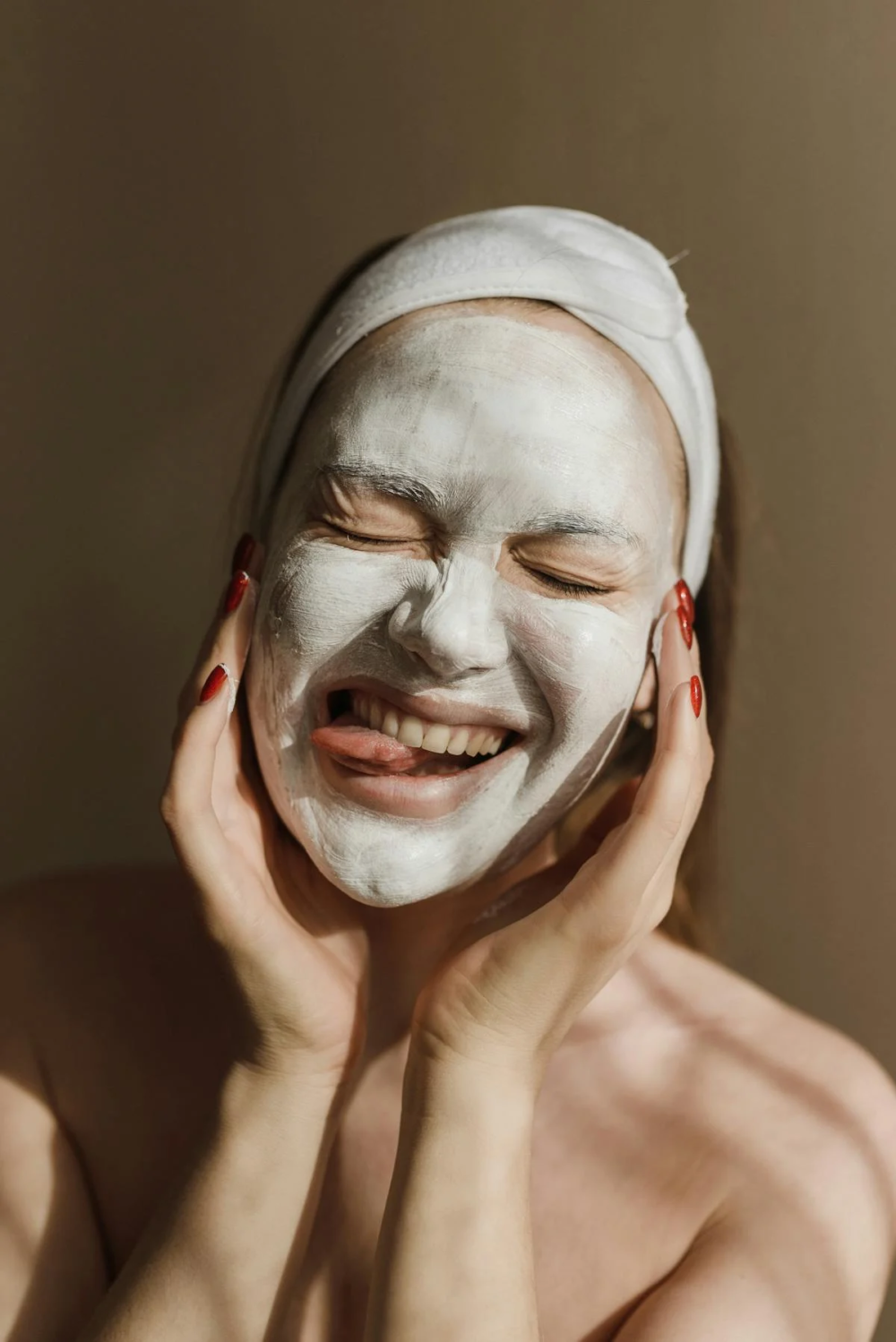
2. Cleansing
The primary purpose of cleansing is to remove dirt, oil, makeup, and other impurities that accumulate on the skin’s surface throughout the day.
A gentle cleanser suitable for one’s skin type can effectively cleanse without stripping the skin of its natural oils.
Contrary to popular belief, expensive cleansers do not necessarily equate to better results.
Numerous affordable cleansers are formulated with gentle ingredients that cleanse thoroughly without disrupting the skin’s delicate balance.
3. Moisturizing
Moisturizing plays a crucial role in maintaining skin hydration and preventing dryness.
It helps to strengthen the skin’s barrier function, which protects against environmental aggressors and transepidermal water loss.
A basic moisturizer can be highly effective in providing essential hydration.
Several affordable moisturizers are available that contain humectants, emollients, and occlusives, which work synergistically to attract, retain, and seal in moisture.
4. Sun Protection
Sun protection is perhaps the most critical aspect of any skincare routine, regardless of age or skin type.
Prolonged exposure to the sun’s harmful ultraviolet (UV) radiation can lead to premature aging, sunburns, and an increased risk of skin cancer.
A broad-spectrum sunscreen with a sun protection factor (SPF) of 30 or higher can effectively shield the skin from both UVA and UVB rays.
Numerous affordable sunscreens are available that offer adequate protection without compromising on quality or effectiveness.
5. Budget-Friendly Alternatives
A common misconception is that expensive skincare products are inherently superior to their affordable counterparts.
However, many drugstore brands offer high-quality products formulated with effective ingredients at a fraction of the cost of luxury brands. Ingredients such as hyaluronic acid, niacinamide, retinol, and vitamin C are often found in both high-end and budget-friendly products.
Researching and identifying affordable products with these ingredients can help beginners build an effective skincare routine without breaking the bank.

6. The Importance of Consistency
Consistency is key to achieving desired results in any skincare routine.
Regardless of the price or complexity of the products used, consistent application and adherence to the routine are crucial for allowing the skin to adapt and reap the benefits of the chosen products.
By establishing a simple and affordable routine, beginners are more likely to maintain consistency and see positive changes in their skin over time.
Understanding Skin Types
The human integumentary system, primarily the skin, serves as a vital barrier against environmental insults while maintaining internal homeostasis.
Understanding the diverse characteristics of skin types is essential for effective skincare and the prevention or management of dermatological conditions.
This analysis will talk about the four (yes four, not three) fundamental skin types, elucidating their distinct features, underlying mechanisms, and implications for personalized care.
1. Oily Skin
- Characteristics: Oily skin is characterized by excessive sebum production, leading to a shiny or greasy appearance, enlarged pores, and a predisposition to acne. This type is often associated with hormonal fluctuations, genetics, and environmental factors such as humidity.
- Underlying Mechanisms: Overactive sebaceous glands, stimulated by androgens like testosterone, generate an abundance of sebum. This lipid-rich substance, while essential for skin lubrication and protection, can clog pores when produced in excess, trapping bacteria and triggering inflammatory responses.
- Implications for Care: Individuals with oily skin should prioritize gentle cleansing to remove excess sebum without stripping the skin’s natural moisture barrier. Non-comedogenic products are crucial to avoid pore blockage. Topical retinoids and salicylic acid can help regulate sebum production and exfoliate dead skin cells, preventing acne formation.
2. Dry Skin
- Characteristics: Dry skin is characterized by a lack of moisture, leading to a tight, rough texture, flaking, and potential itching or irritation. This type can be exacerbated by cold weather, low humidity, harsh soaps, and underlying medical conditions like hypothyroidism.
- Underlying Mechanisms: Reduced sebum production and impaired barrier function contribute to dry skin. Insufficient lipids compromise the skin’s ability to retain moisture, resulting in dehydration and increased transepidermal water loss.
- Implications for Care: Hydration is paramount for dry skin. Emollients and humectants should be incorporated into skincare routines to replenish moisture and restore the skin’s barrier function. Avoiding harsh cleansers and opting for lukewarm water can help minimize further dehydration.
3. Combination Skin
- Characteristics: Combination skin presents with both oily and dry areas, typically with an oily T-zone (forehead, nose, and chin) and dry cheeks. This type necessitates a nuanced approach to skincare, addressing the divergent needs of different facial zones.
- Underlying Mechanisms: Sebaceous gland distribution is uneven in combination skin, with higher density in the T-zone. Hormonal fluctuations can also contribute to the varying oiliness levels across the face.
- Implications for Care: Zonal skincare is recommended, tailoring products to specific areas. The oily T-zone may benefit from oil-control cleansers and lightweight moisturizers, while the dry cheeks require richer emollients to maintain hydration.

4. Normal Skin
- Characteristics: Normal skin is the elusive ideal, exhibiting balanced sebum production, adequate hydration, and a smooth, even texture. Pores are typically small and unclogged, with minimal blemishes.
- Underlying Mechanisms: Well-functioning sebaceous glands produce just enough sebum to maintain skin health without causing excessive oiliness. The skin barrier is intact, effectively regulating moisture levels.
- Implications for Care: Maintaining the skin’s natural balance is key. Gentle cleansing and moisturizing, along with sun protection, are essential to preserve the skin’s healthy state. Regular exfoliation can help remove dead skin cells and promote radiance.
A simple self-assessment test that will help you determine your skin type
The Bare-Faced Method
- Cleanse: Wash your face thoroughly with a gentle cleanser and pat it dry. Do not apply any skincare products.
- Observe: After 30 minutes, observe your skin in natural light. Pay attention to how it feels and looks.
- Identify:
- Normal: Skin feels comfortable, neither oily nor dry. Pores are small, and there are few to no blemishes.
- Oily: Skin appears shiny or greasy, especially in the T-zone (forehead, nose, and chin). Pores may be enlarged, and there may be blackheads or pimples.
- Dry: Skin feels tight, rough, or flaky. Pores are small, and there may be redness or irritation.
- Combination: Skin is oily in the T-zone and dry or normal elsewhere. Pores may be larger in the T-zone.
- Normal: Skin feels comfortable, neither oily nor dry. Pores are small, and there are few to no blemishes.
Additional Tips:
- Blotting Paper Test: Gently press a blotting sheet on different areas of your face after a few hours. Hold it up to the light. If there’s a lot of oil, you likely have oily skin. Minimal oil suggests combination or normal skin, and no oil indicates dry skin.
- Consider Your History: Think about your skin’s usual behavior. Does it often feel oily or dry? Do you experience breakouts frequently?
- Consult a Dermatologist: If you’re unsure or have concerns about your skin, it’s always best to consult a dermatologist. They can provide a professional assessment and recommend personalized skincare solutions.
Important Note: Skin type can change over time due to factors like weather, hormones, and age. It’s helpful to reassess your skin type periodically, especially if you notice significant changes in your skin’s behavior.

The 3 Pillars of Skin Care
Healthy and radiant skin is not merely a product of genetics; it is a reflection of consistent and appropriate care.
The three fundamental pillars of skincare—cleansing, moisturizing, and sun protection—serve as the foundation for maintaining skin health, preventing premature aging, and protecting against environmental damage.
This analysis delves into each pillar, elucidating its significance, recommended practices, and tailored approaches for diverse skin types.
A. Cleansing:
- Purpose: Cleansing is the first and arguably most crucial step in any skincare routine. Its primary purpose is to remove dirt, oil, makeup, sweat, pollutants, and other impurities that accumulate on the skin’s surface throughout the day. These substances can clog pores, trigger inflammation, and contribute to various skin issues like acne, dullness, and irritation.
- Recommended Cleansers: The choice of cleanser should align with individual skin type and concerns.
- Oily Skin: Gentle foaming or gel cleansers with ingredients like salicylic acid or glycolic acid can help regulate oil production and prevent breakouts.
- Dry Skin: Cream or oil-based cleansers with hydrating properties like hyaluronic acid or ceramides are preferable to avoid stripping the skin’s natural moisture barrier.
- Sensitive Skin: Fragrance-free, hypoallergenic cleansers with soothing ingredients like aloe vera or chamomile can minimize the risk of irritation.
- Combination Skin: A mild cleanser suitable for all skin types can be used, followed by targeted treatment for specific areas.
- Oily Skin: Gentle foaming or gel cleansers with ingredients like salicylic acid or glycolic acid can help regulate oil production and prevent breakouts.
- Cleansing Techniques and Frequency:
- Wet the face with lukewarm water.
- Apply a small amount of cleanser to the fingertips and massage it gently onto the face in circular motions, avoiding the delicate eye area.
- Rinse thoroughly with lukewarm water and pat dry with a clean towel.
- Cleansing should be done twice daily, morning and evening, to maintain skin hygiene and prepare the skin for subsequent skincare steps.
- Wet the face with lukewarm water.
B. Moisturizing:
- Importance: Moisturizing is essential for maintaining skin hydration, protecting the skin barrier, and preventing moisture loss. Well-hydrated skin appears plump, supple, and youthful, while dehydrated skin can look dull, rough, and prone to fine lines. Moisturizers also provide a protective layer that shields the skin from environmental stressors like pollution and harsh weather conditions.
- Recommended Moisturizers:
- Oily Skin: Lightweight, oil-free moisturizers or gel formulations with humectants like glycerin or hyaluronic acid can provide hydration without clogging pores.
- Dry Skin: Richer creams or ointments with occlusives like shea butter or petrolatum help lock in moisture and prevent excessive water loss.
- Sensitive Skin: Fragrance-free, hypoallergenic moisturizers with soothing ingredients like colloidal oatmeal or niacinamide can calm irritation and reduce redness.
- Combination Skin: A lightweight moisturizer can be used for the entire face, with a richer formula applied to drier areas as needed.
- Oily Skin: Lightweight, oil-free moisturizers or gel formulations with humectants like glycerin or hyaluronic acid can provide hydration without clogging pores.
- When and How to Apply Moisturizer: Moisturizer should be applied to clean, damp skin twice daily, morning and evening. Gently massage the moisturizer onto the face and neck in upward strokes until fully absorbed. For optimal results, layering multiple hydrating products, such as a serum followed by a moisturizer, can be beneficial.
C. Sunscreen:
- Importance: Daily sunscreen use is non-negotiable for all skin types, regardless of the season or weather conditions. Unprotected sun exposure is the leading cause of premature skin aging, including wrinkles, fine lines, age spots, and loss of elasticity. It also significantly increases the risk of skin cancer.
- UVA vs. UVB Rays:
- UVA rays: Penetrate deeper into the skin, causing long-term damage like wrinkles and age spots. They contribute to photoaging and are present throughout the day, even on cloudy days.
- UVB rays: Primarily responsible for sunburns and play a significant role in skin cancer development. They are most intense during midday hours.
- UVA rays: Penetrate deeper into the skin, causing long-term damage like wrinkles and age spots. They contribute to photoaging and are present throughout the day, even on cloudy days.
- Recommended Sunscreen: A broad-spectrum sunscreen with an SPF of 30 or higher is essential. Broad-spectrum sunscreens protect against both UVA and UVB rays.
- Application Tips and Frequency:
- Apply sunscreen generously to all exposed skin, including the face, neck, ears, and hands, 15-20 minutes before sun exposure.
- Reapply sunscreen every two hours, or more frequently if swimming or sweating.
- Choose a sunscreen formulation that suits your skin type and preference.
- Apply sunscreen generously to all exposed skin, including the face, neck, ears, and hands, 15-20 minutes before sun exposure.

Additional Tips for Beginners
While the three fundamental pillars of skincare—cleansing, moisturizing, and sun protection—establish a solid foundation, incorporating additional practices and embracing a holistic approach can further enhance skin health and address specific concerns.
This analysis explores three key areas that beginners can explore to elevate their skincare routine: optional steps like exfoliation and toning, natural remedies for common issues, and the profound impact of lifestyle factors on skin health.
1. Optional Steps: Exfoliation and Toning
- Exfoliation: This step involves the removal of dead skin cells from the surface, revealing a smoother, brighter complexion and promoting cellular turnover. Exfoliation can be achieved through physical methods (scrubs, brushes) or chemical means (acids like glycolic or lactic acid). However, beginners should exercise caution and opt for gentle exfoliants to avoid irritation. Start with a frequency of once or twice a week and adjust based on skin tolerance.
- Toning: Toners are water-based solutions that can help remove residual impurities, balance skin pH, and prep the skin for subsequent product absorption. While not strictly necessary, toners can provide additional benefits depending on their formulation. Ingredients like witch hazel can help control oil, while hyaluronic acid can boost hydration.
2. Natural Remedies for Common Skin Concerns
- Acne: Honey, with its antibacterial and anti-inflammatory properties, can be applied as a spot treatment for acne. Aloe vera gel can soothe redness and irritation. Tea tree oil, diluted with a carrier oil, can also help combat acne-causing bacteria.
- Sunburn: Aloe vera gel is renowned for its cooling and soothing effects on sunburned skin. It can help alleviate pain, reduce inflammation, and promote healing. Cucumber slices or cold milk compresses can also provide relief.
- Dryness: Applying mashed avocado or a honey and olive oil mask can provide deep hydration. Oatmeal baths can soothe dry, itchy skin.
- Disclaimer: While natural remedies can offer benefits, it’s important to patch-test them first to ensure no allergic reactions occur. Consult a dermatologist if you have persistent or severe skin concerns.
3. The Impact of Lifestyle on Skin Health
Skin health is not merely a matter of topical treatments; it is intrinsically linked to overall well-being. Lifestyle factors play a significant role in determining skin quality and resilience.
- Diet: A balanced diet rich in fruits, vegetables, whole grains, and lean protein provides essential nutrients that support skin health. Antioxidant-rich foods like berries and leafy greens protect against free radical damage, while omega-3 fatty acids found in fish promote skin elasticity and hydration.
- Hydration: Drinking adequate water is crucial for maintaining skin hydration and preventing dryness. Aim for at least eight glasses of water per day.
- Sleep: During sleep, the body repairs and regenerates, including the skin. Adequate sleep is essential for collagen production, cell renewal, and a healthy complexion.
- Stress Management: Chronic stress can exacerbate various skin conditions, including acne, eczema, and psoriasis. Stress management techniques like yoga, meditation, or spending time in nature can promote skin health from within.
Common Mistakes to Avoid
Over-Exfoliation
- Mistake: Exfoliation, while beneficial for removing dead skin cells and promoting a smoother complexion, can be detrimental when done excessively. Over-exfoliating strips the skin of its natural oils, disrupts the barrier function, and can lead to redness, irritation, dryness, and even acne breakouts.
- Consequences: Compromised barrier function leaves the skin vulnerable to environmental damage and dehydration. Over time, this can accelerate premature aging, exacerbate existing skin conditions, and trigger inflammatory responses.
- Solution: Limit exfoliation to 1-2 times per week, depending on skin type and sensitivity. Opt for gentle exfoliants with small, round beads or chemical exfoliants with low concentrations of acids. Always follow up with a hydrating moisturizer to replenish lost moisture.
Using Harsh Products
- Mistake: Harsh cleansers, toners, or exfoliants with high alcohol content, sulfates, or fragrances can strip the skin’s natural oils, disrupt its pH balance, and cause irritation, dryness, and inflammation. These products can exacerbate existing skin conditions like acne or rosacea.
- Consequences: Repeated use of harsh products can compromise the skin’s barrier function, making it more susceptible to environmental damage and infections. It can also lead to a rebound effect, where the skin produces even more oil to compensate for the dryness, leading to clogged pores and breakouts.
- Solution: Choose gentle, pH-balanced cleansers formulated for your skin type. Avoid products with harsh ingredients and opt for those with soothing, hydrating properties like aloe vera, chamomile, or hyaluronic acid.

Skipping Sunscreen
- Mistake: One of the most detrimental skincare mistakes is neglecting daily sunscreen use. Unprotected sun exposure is the leading cause of premature skin aging, including wrinkles, fine lines, age spots, and loss of elasticity. It also significantly increases the risk of skin cancer.
- Consequences: UVA rays penetrate deep into the skin, causing damage to collagen and elastin fibers, leading to wrinkles and sagging. UVB rays are responsible for sunburns and play a significant role in skin cancer development.
- Solution: Apply a broad-spectrum sunscreen with an SPF of 30 or higher every day, even on cloudy days. Reapply every two hours, or more frequently if swimming or sweating. Choose a sunscreen formulation that suits your skin type and lifestyle.
Ignoring Your Skin Type
- Mistake: Using products not formulated for your specific skin type can lead to various issues. For example, using a heavy moisturizer on oily skin can clog pores and trigger breakouts, while using a harsh cleanser on dry skin can exacerbate dryness and irritation.
- Consequences: Mismatched products can worsen existing skin concerns and create new ones. They can also impede the effectiveness of other skincare steps, as the skin may not be adequately prepared to absorb subsequent products.
- Solution: Identify your skin type (oily, dry, combination, or normal) and choose products specifically designed for your needs. Consult a dermatologist if you’re unsure of your skin type or need personalized recommendations.
Not Patch Testing New Products
- Mistake: Applying a new product directly to your face without patch testing can lead to allergic reactions or irritation. Some ingredients, even natural ones, can trigger sensitivities in certain individuals.
- Consequences: Allergic reactions can manifest as redness, itching, swelling, or even hives. Irritation can cause dryness, flakiness, or breakouts. In severe cases, it may require medical attention.
- Solution: Always patch-test new products on a small area of skin, like the inner forearm, before applying them to your face. Wait 24-48 hours to observe any adverse reactions. If no irritation occurs, it’s likely safe to use on your face.

How to Build a Personalized Routine?
Creating a skincare routine that caters to your unique skin type, concerns, and lifestyle is essential for achieving and maintaining optimal skin health.
While the basic pillars of cleansing, moisturizing, and sun protection remain constant, the specific products and additional steps can be tailored to your individual needs.
This guide outlines a step-by-step approach to building a personalized skincare routine that works for you.
1. Identify Your Skin Type
- Oily: Characterized by excess sebum production, shine, enlarged pores, and a tendency towards breakouts.
- Dry: Feels tight, rough, and prone to flaking or itching due to a lack of moisture.
- Combination: Exhibits both oily and dry areas, typically with an oily T-zone and dry cheeks.
- Normal: Well-balanced, with minimal oiliness or dryness, and few blemishes.
- Sensitive: Prone to irritation, redness, or reactions to certain ingredients.
If you’re unsure of your skin type, consult a dermatologist for a professional assessment.
2. Pinpoint Your Concerns
- Acne: Look for products with salicylic acid, benzoyl peroxide, or tea tree oil.
- Aging: Consider retinoids, hyaluronic acid, vitamin C, or peptides.
- Hyperpigmentation: Seek out ingredients like niacinamide, kojic acid, or hydroquinone.
- Dryness: Opt for hydrating ingredients like hyaluronic acid, glycerin, or ceramides.
- Sensitivity: Choose fragrance-free, hypoallergenic products with soothing ingredients like aloe vera or chamomile.
3. Build Your Routine
- Morning:
- Cleanser: Use a gentle cleanser formulated for your skin type.
- Toner: (Optional) Apply a toner to balance skin pH and prep for subsequent products.
- Treatment: (Optional) Apply any targeted serums or treatments for specific concerns.
- Moisturizer: Use a lightweight, hydrating moisturizer suitable for daytime wear.
- Sunscreen: Apply a broad-spectrum sunscreen with SPF 30 or higher.
- Cleanser: Use a gentle cleanser formulated for your skin type.
- Evening:
- Cleanser: Double cleanse to remove makeup and impurities thoroughly.
- Toner: (Optional) Apply a toner if desired.
- Treatment: Apply any targeted serums or treatments for specific concerns. This is the ideal time to use retinoids or other active ingredients that may increase sun sensitivity.
- Moisturizer: Apply a richer moisturizer to nourish and repair the skin overnight.
- Cleanser: Double cleanse to remove makeup and impurities thoroughly.
- Additional Steps: (Optional)
- Exfoliation: Incorporate a gentle exfoliant 1-2 times per week to remove dead skin cells.
- Masks: Use hydrating, soothing, or purifying masks once or twice a week for a boost.
- Exfoliation: Incorporate a gentle exfoliant 1-2 times per week to remove dead skin cells.
4. Patch Test and Introduce Products Gradually
- Before incorporating new products into your routine, patch-test them on a small area of skin (like your inner forearm) to check for any allergic reactions or irritation.
- Introduce new products one at a time, allowing your skin to adjust before adding another.
5. Be Patient and Consistent
- Skincare results take time. Be patient and consistent with your routine to see improvements.
- Adjust your routine as needed based on your skin’s response and any changes in your concerns or environment.
Additional Tips:
- Consider your lifestyle and environment when choosing products. For example, if you live in a humid climate, you might prefer lighter formulations.
- Don’t forget to care for your neck and décolletage as you would your face.
- Pay attention to your skin’s feedback and adjust your routine accordingly.
- Consult a dermatologist if you have persistent or severe skin concerns.
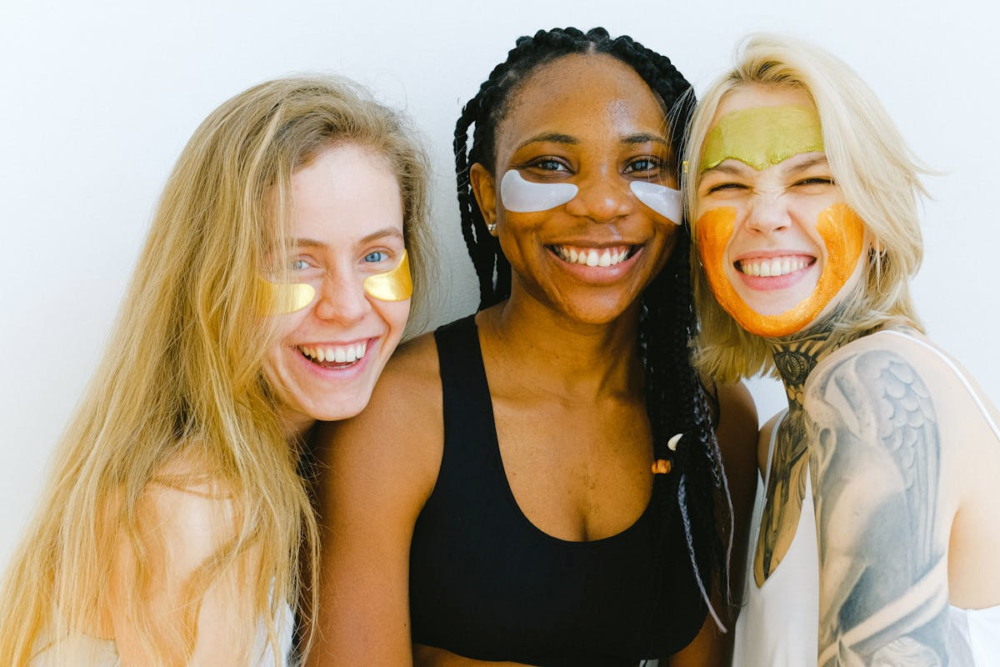
Conclusion
In conclusion, mastering the art of skincare involves not only understanding the fundamental pillars but also being mindful of common pitfalls that can hinder progress.
By identifying your skin type, pinpointing concerns, and building a personalized routine with suitable products, you lay the groundwork for healthy and radiant skin.
Remember, patience and consistency are key.
Results take time, and adjustments may be necessary along the way. Embrace additional steps like exfoliation and toning if desired, explore the benefits of natural remedies, and prioritize a healthy lifestyle to nourish your skin from within.
By avoiding common mistakes like over-exfoliation, harsh products, and neglecting sunscreen, you can ensure that your skincare journey is both effective and enjoyable.
Ultimately, a well-informed and personalized approach is the key to unlocking your skin’s full potential.
Whether you’re a beginner or a seasoned skincare enthusiast, continuous learning and adapting your routine to your evolving needs will pave the way for a lifetime of healthy, glowing skin.





